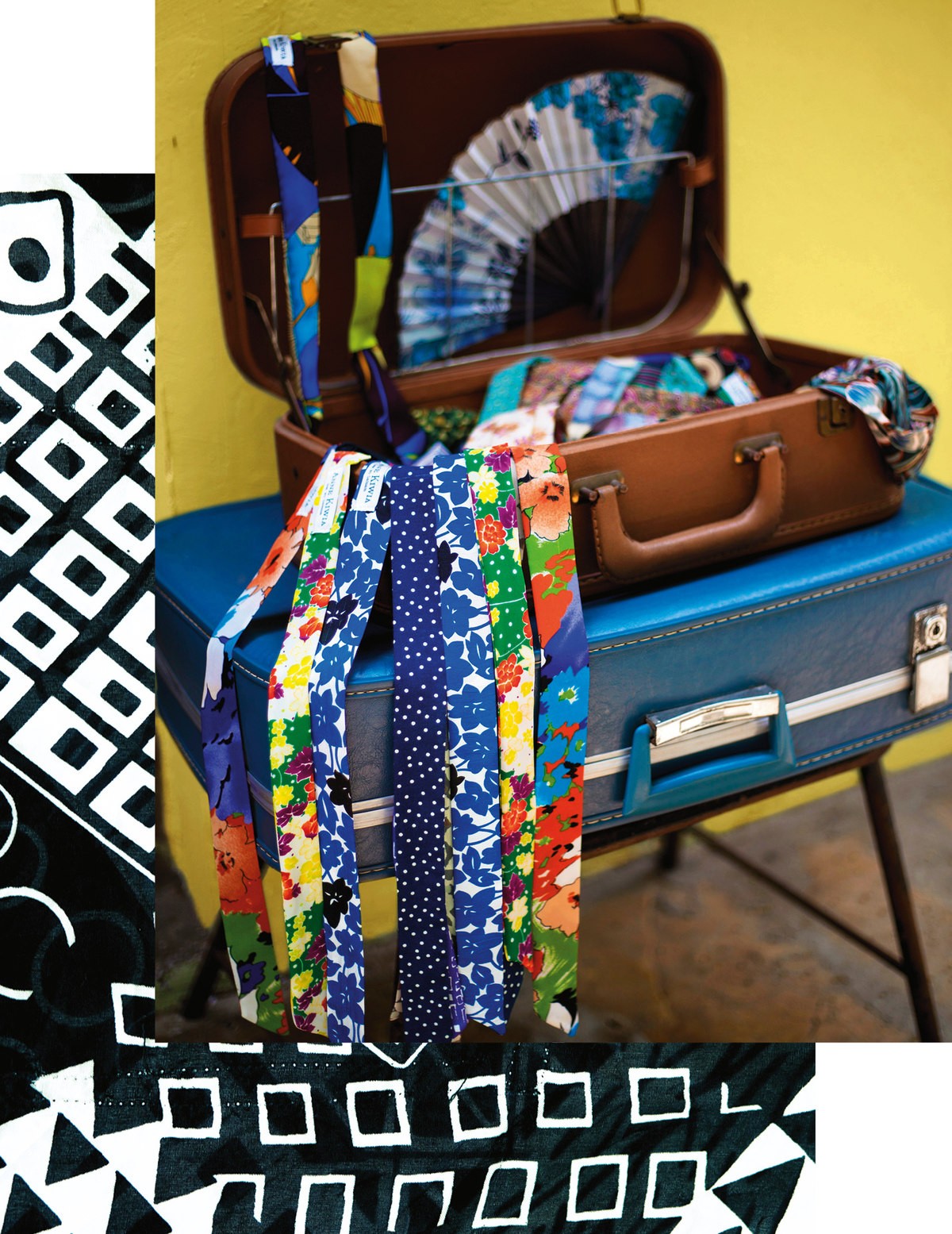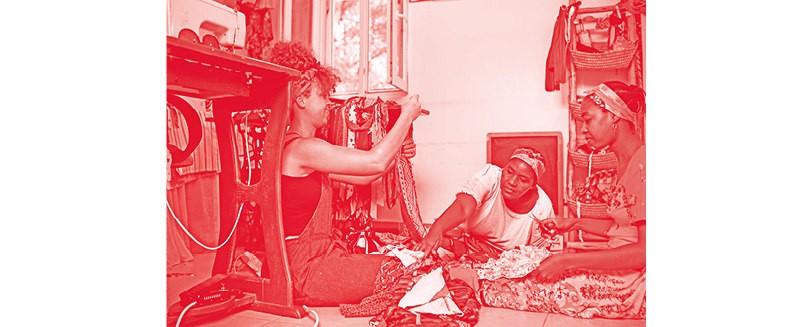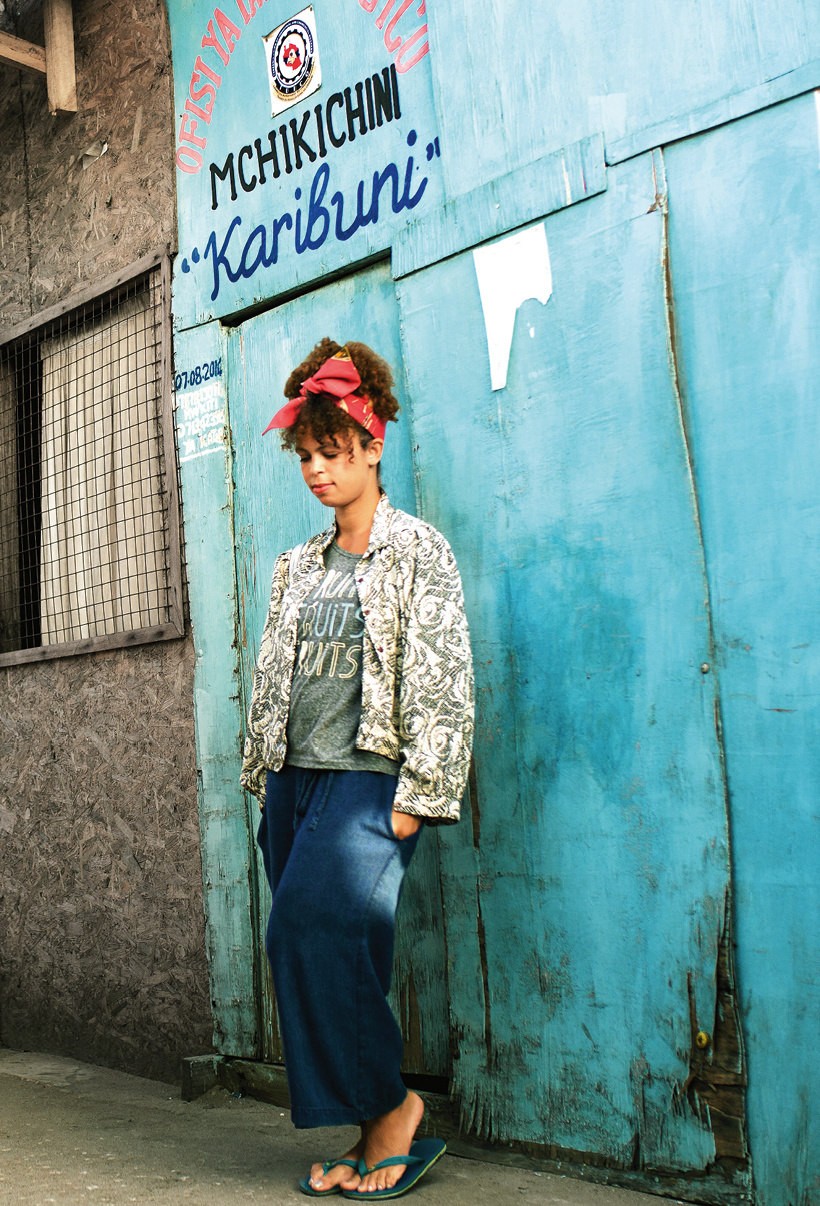
You never know what time you’ll get there
There are people whose biographies follow a perfectly straight line. And then there’s fashion designer Anne Kiwia.
Wiebke Brauer (interview) & OGS Studios (Clemence Eliah, Osse G. Sinare) (photo)

The Audi Magazine: You have worked in Munich at Vogue and mytheresa.com, and now you rummage around at flea markets in Dar es Salaam in Tanzania. That’s quite a contrast ...
Anne Kiwia: I like to imagine I’m Cinderella in reverse: I used to be a princess, and today—well, my life is a kind of backwards fairy tale. Seriously, I used to have a great team, but I wouldn’t want to sit in an office again. I’d rather walk through the markets looking for things, drinking tea and talking to people.
You arrived in Tanzania with your husband and a couple of suitcases and started at square one. Would you describe yourself as bold?
I am definitely very inquisitive, but not a big risk taker. I have family in Dar es Salaam, so there was always a safety net. So I wouldn’t call that especially bold, to be honest.
Before that, you and your husband backpacked through Thailand and Laos. Do you believe traveling changes the way you think?
When I talk to people who have only ever lived in one place, I notice that their knowledge of other countries is relatively limited, and mainly shaped by the media. Usually in the negative sense. For example, many people have a completely misguided image of Tanzania. We don’t all get malaria, and there are cafés as well.
And, apparently, working as a fashion designer is also an option. You sell high-end hairbands. How did you get into that business?
I landed, looked around and saw that what you could get in the way of clothing was very limited, usually poor-quality pieces from India or China—and expensive, too. At some point, my husband told me about the secondhand market right next to his office. I went and was totally amazed. The clothes weren’t shabby; people just didn’t want to wear them anymore. I bought a completely new wardrobe, received dozens of compliments and immediately thought—this could be so much more. That’s when I began to experiment. One day, I came across a hairband. I didn’t know at first whether it was a belt or a scarf, but I liked the shape. And that’s how it started.
Your hairbands are made of recycled materials?
Yes, I use silk and high-quality cotton, fabrics from around the world, and give them a new home. The things I find are not threadbare. They are seconds from department stores or clothes that people didn’t like and gave away. I’d rather not even call it “secondhand.” That implies something abandoned, unloved.
Isn’t it crazy how far these items of clothing travel?
That’s what makes it so exciting. Going to the market is like visiting different continents. I might discover a label from South Korea. With some pieces from Europe, I can see that someone was thinking: I bought this so cheaply, I can just toss it out when I’m done with it. Or I find clothes that come from India with little mirrors and bells on them. It’s fun. And if the clothing isn’t sent to Tanzania, then where?
Is it true that East Africa is moving toward prohibiting imports of secondhand clothing?
Yes, to stimulate local production. But half of the people in Tanzania rely on used goods, directly or indirectly. The people who sell these things at the markets work hard, aren’t educated and can’t imagine working in a factory from 9 to 5 every day.


I love Africa.
I can make a difference here.

Anne Kiwia is truly cosmopolitan. As the daughter of a Romanian mother and Tanzanian father, she was born in Romania and now lives in Dar es Salaam. She spent her salad days in locales including Munich and Sydney.


Upcycling involves transforming waste or seemingly worthless materials into new goods or products with a new purpose. This approach is applied very often in low-income communities or developing countries, where special techniques and processing methods are developed to give castoffs from industrialized nations a new life.
How does Tanzania compare to other countries in East Africa?
Tanzania’s neighbors have the advantage that colonization led to English or French being spoken there. People there can at least understand what they see on TV or on a website. But if you speak only Swahili, Internet forums aren’t very useful. I’m noticing that people are waking up, though.
Does that mean digitalization has come to Dar es Salaam?
It’s hard to believe, but even someone who is begging on the street for a few coins will turn around and pull out a smartphone a second later. Whether they found it and how they are using it is another question. But people are interested and eager to learn more. That drives them. I have noticed that my employees take an unbelievable number of photos and videos. A hundred pictures from the same vantage point and several-minute films in a single take.
That’s a start ...
Yes, and what they do with it remains to be seen. I would love to see people try things out more and find out how the Internet can be beneficial. You can’t earn money from liking posts on Facebook, and you can’t eat a posted photo, either. But you can google to find out why your child is crying. Almost no one here does that yet.
How do you get around in Dar es Salaam?
Everyone drives cars. There are no real sidewalks, and it’s a furnace for about eight months out of the year. In Munich, I rode my bike everywhere. That’s just not possible here. It’s much too dangerous and way too hot. Besides, cows or chickens often dash into the street here—in the middle of a city of millions. It’s a normal occurrence.
How is traffic?
The infrastructure can only be described as frustrating. You’re driving down the road and can’t turn right or left for several minutes because houses are wildly springing up on every side street. Most of the traffic is concentrated on three or four roads into the city center. I often have to drive what seems like an eternity to reach somewhere close by, because of a lack of access. And with the buildings so tightly packed, the streets can’t be widened, either.
Can you even estimate how long it will take to get somewhere?
No. You never know what time you’ll get there. Punctuality is a pipe dream in Dar es Salaam. When I drive from my house to my store, which is about six kilometers away, it can take twenty minutes—or two hours. And in the rainy season, I sometimes say to myself: no point in trying, just stay home.
Has that changed you?
Oh sure, yes. I have mastered the art of maneuvering into even the tightest parking spaces. And when I’m back in Europe, I notice that I’ve lost the ability to do things at the speed people are used to there. That’s because I don’t have to hurry here in Dar es Salaam. I couldn’t even if I wanted to. So I take my time.
Quite a few of us consider time to be the ultimate luxury.
There’s something to that, I think.
Do you see a chance for improvement and development in Dar es Salaam?
It’s hard to say. The current president wants to make a clean sweep of corruption and put new structures in place. But if someone else comes to power, the circumstances could change rapidly. Tanzania is unpredictable.
Are you going to stay?
I love Africa. Here I’m not tied to European perfectionism or subject to the pressure of expectations. I don’t have to be a wealthy investor to build something up. Instead, I was able to take a very simple idea, create jobs and inspire young people. I can fulfill myself here and at the same time make a difference as an ambassador for a multicultural, global future. That’s important to me.
